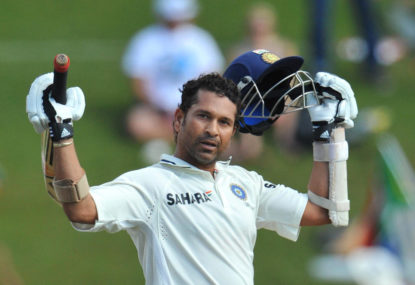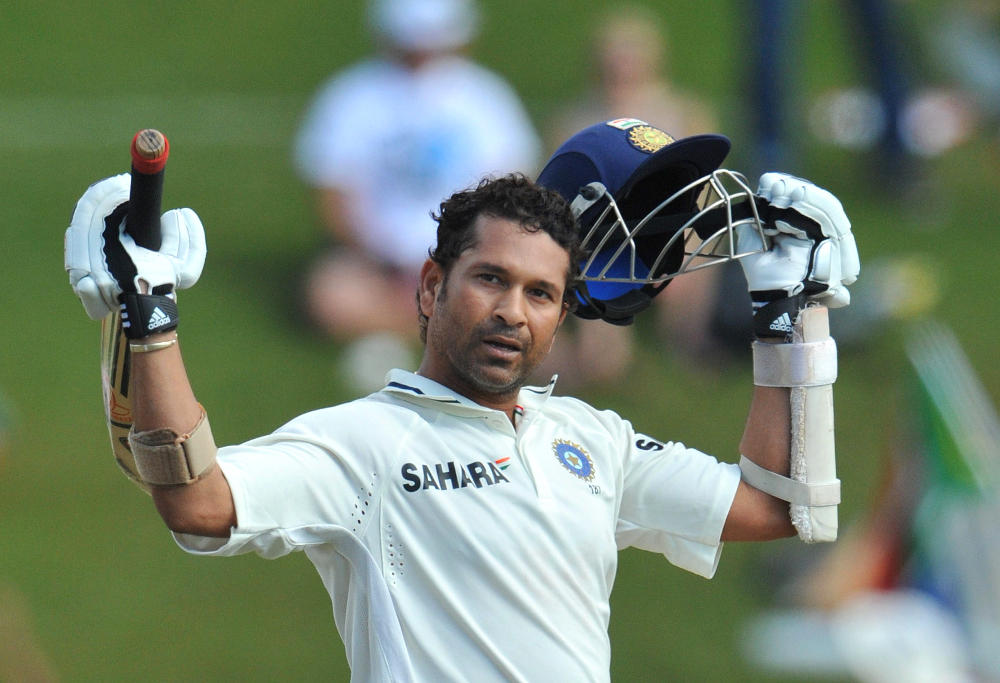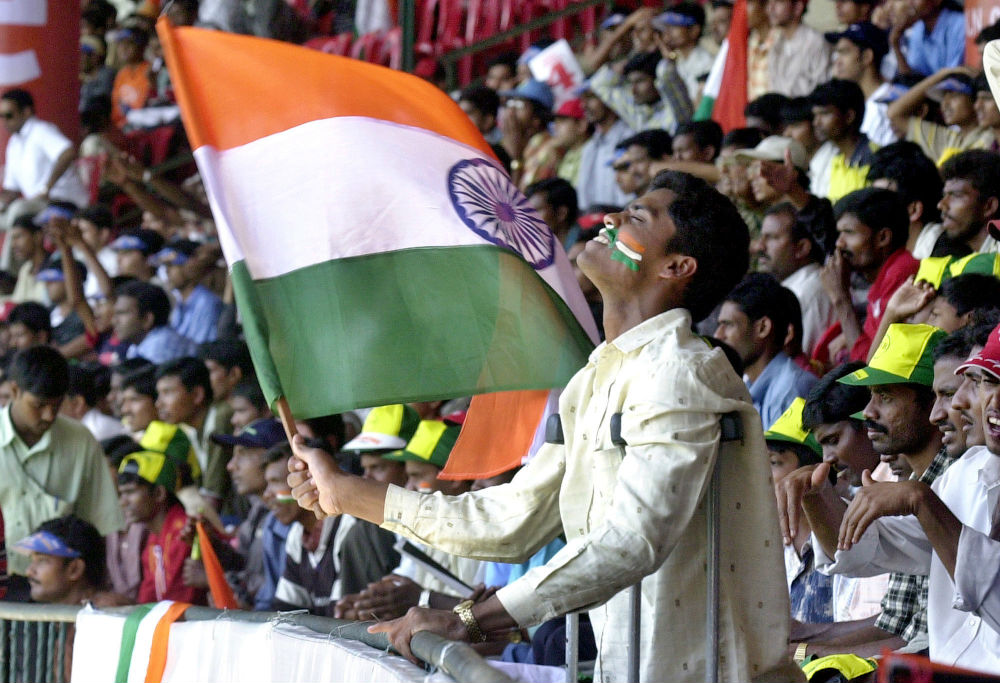Dharamshocker: England lose final Test by an innings as ANOTHER batting collapse seals India's dominant series win
England's tour of India has ended in abject fashion as the tourists were hammered by an innings and 64 runs inside three days, with…

India never boasted a strong batting line-up in the first 20 years of its existence in limited-overs cricket.
One incident that epitomised the situation was when Sunil Gavaskar batted out 174 balls to score only 36 runs when India had to chase 334 against England in the 1975 World Cup. No India batsman could score even a single ODI century until 1983.
The success achieved in 1983 and 1985 was the result of the all-round strength that India possessed at that time. The first ODI century for India was scored by Kapil Dev when he saved India against Zimbabwe in the 1983 World Cup from a grave situation of 17/5. By the end of 1990 India had only 17 ODI centuries to its name.
All that changed when the Indian demi-god arrived on the scene. Although it took a while for Sachin Tendulkar to get going into the century mode, he was producing consistent scores of the 50s with a strike rate hovering around 120.
Until 2005 Sachin was the primary chasing batsman for India. He would open the innings, anchor the chase with a century and try to get India home. His average in winning chases for India until the end of 2004 was a whopping 62 with 13 centuries and 22 half-centuries. It was he and Saurav Ganguly who would play the pivotal role by having a good opening stand.
I mentioned ‘until 2005’ because that year marked a distinctly different era of batting in Indian cricket. It featured two of the best finishers in ODI cricket ever. With an able support from a batsman in middle order whose name will surprise you, Yuvraj Singh and MS Dhoni formed a deadly duo that did a better job at finishing than a sharpshooter.
The heroics at Lord’s in the Natwest final against England established Yuvraj Singh Mohammad Kaif in the team. The powerfully built flamboyant wicketkeeper Mahendra Singh Dhoni cemented his place in the team after his explosive 148 against Pakistan in April 2005. He settled in the lower middle order by August 2005.

(Duif du Toit / Gallo Images/Getty Images)
Yuvraj batting at 4/5 and MS Dhoni coming in at 6/7 kickstarted the first chasing era for India. Their finest display in 2005 was when India was chasing 251 against Zimbabwe at Harare and found themselves languishing at 91/5. Yuvraj-Dhoni raised a partnership of 158 in only 140 balls. Yuvraj got out for a marvellous 120 when the target was just six runs away. MS Dhoni sealed the win in his own fashion with a six.
The supporting player in the middle order to this Jai-Veeru pair was surprisingly Rahul Dravid. He anchored and finished the winning chase four times in 2005. Only Dhoni did better than him in that aspect, finishing a match not out five times.
The charisma that began in mid-2005 lasted until the year 2008. The duo had four century partnerships in those two and a half years. All four came against Pakistan, with two in Pakistan and two in India. Apart from Yuvraj-Dhoni, Virender Sehwag at the top and Suresh Raina at the end also ensured few victories for India.
This was the first time that India could establish itself as a better chasing team than a bat-first team. The lack of bowling penetration was covered by the skilful batting order that contained future champions. It was working like a set formula. In the period between November 2005 and February 2006 India won eight straight tosses and elected to field, all matches resulted in India’s win.

(AP Photo/Rafiq Maqbool)
In the year 2008 another big name settled itself in India’s limited-overs scheme. With Sehwag-Tendulkar blazing at the top, Gautam Gambhir had to play at the number three or four. The man with enormous determination and steely resolve played a major role in as many as four winning chases in the year for India.
Although the modus operandi of chasing had gone away, India kept doing well in the chases with the heavy contributions from the top order consisting of Gambhir, Sehwag and Tendulkar. Still, the winning percentage in chases for India dipped near to 50 in late 2009.
As if on cue, a young boy emerged from Delhi. He had led the national under-19 team to a World Cup victory in 2008. Virat Kohli, arguably the greatest batsman, showed early signs of his skills while chasing in ODIs when he bossed a low-scoring chase of 130 against Windies. However, it was his 224-run partnership with Gambhir while chasing 316 against Sri Lanka in December 2009 that confirmed the potential.
The year 2010 belonged to the Delhi pair of Gambhir and Kohli. In ten out of 12 winning chases, either of them or at times both had a major role to play. They scored four centuries and eight half-centuries in total while achieving the targets for India in 2010.
The World Cup competition arrived in India next year, which also saw Yuvraj flicking his performance switch to ‘on’. He dominated the first three chases and scored 50-plus in each of them. Best of them of course was the one against three-time champions Australia in the quarter-final at Ahmedabad. Yuvraj saw the team home along with Suresh Raina while chasing 261 and knocked Australia out of the tournament.

(AP Photo/Rui Vieira)
The story of World Cup-winning chase is well known to everyone. Gambhir and Dhoni’s masterclass saw India lifting the 2011 World Cup in the Wankhede Stadium, Mumbai. Later that year it was Rohit Sharma who ably supported Virat in winning chases for India. Rohit made four 50-plus scores and Virat made four 80-plus scores in the next eight winning chases.
The legend of Virat started forming itself in 2012. After his assuring first Test century at Adelaide he thrived in the traditional Commonwealth Bank tri-series. In the span of 20 days he played two of his greatest knocks ever.
He started at Bellerive Oval, where after months of losing, India had to win by bonus point against Sri Lanka to entertain any hopes of entering the finals of tri-series. When Sri Lanka posted 320, chasing it inside 40 overs was improbable, so even a win would have done enough to make India happy.
The Indian team thought differently, though. When Kohli walked in to bat India had already scored 86/2 in the first nine overs. Kohli continued to flourish and kept attacking throughout to reach the target by the 37th over. Malinga’s bowling figures of 7.4–0–96–1 are enough to convey the carnage story.
In the very next month Virat piled up 183 runs against Pakistan to chase 330 in the Asia Cup. His 183 came in only 148 balls against the likes of Saeed Ajmal, Shahid Afridi and Umar Gul. After this knock he added one more century to his list of centuries scored while winning chases for India in the year 2012.

(AP Photo/Gautam Singh)
Since 2013 Virat Kohli has averaged an astronomical 117.00 in 36 matches where India has won batting second. The man has already scored more centuries than anyone else in the world while chasing in ODIs. He has already scaled the peaks of what others have achieved; now he’s creating his own mountain of runs.
The case of MS Dhoni is even more interesting. From being a swashbuckling power-hitter in the end overs, Dhoni transformed himself into a super cool finisher who would plan out his run chase as systematically as a scheming mad scientist would do. Always in grips with his skill, MS next assumed the unique role of an enabler – a batsman who would let other batsmen have a hit and step up if needed too.
The addition of Rohit Sharma and Shikhar Dhawan at the top has further strengthened the Indian batting powerhouse. It was thanks to their contribution that India could pull off chases of 359 and 351 with ease against Australia in the freak series of 2013. Don’t forget that Kohli also scored a century in each of them, one of which came in only 52 balls, the fastest ever for India.
The fact remains that in Kohli and Dhoni India has two of the greatest chasing batsmen in ODI cricket. The records they hold testify to the fact. Virat averages around 65 while batting second and has already scored more centuries than anyone else. Dhoni has scored or witnessed winning runs 45 times in ODI cricket, more than anyone else in the world.
Along with hitman Rohit Sharma, Shikhar Dhawan and many other emerging young batsmen coming through the wings, Indian ODI batting is thriving at its best. However, the efforts of chasing heroes in the bygone era will always live in the memory of an Indian cricket fan.